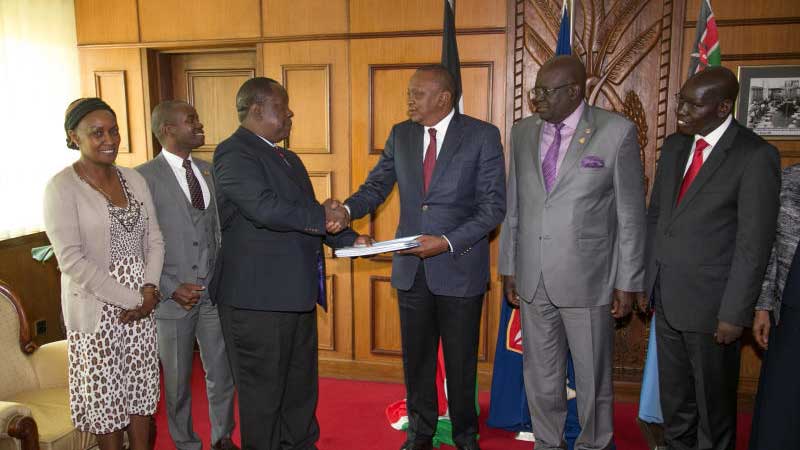×
The Standard e-Paper
Home To Bold Columnists

President Uhuru Kenyatta (centre) receives KCSE exam results from Education CS Fred Matiang’i in Nairobi. [PSCU]
Teachers picked to mark this year’s Kenya Certificate of Secondary Education (KCSE) examinations were first made to sit the same papers they were to mark.